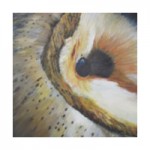Intuitive counseling is professional guidance using an intuitive connection with the individual’s higher self and spirit guides to obtain specific insight about the individual’s life circumstances and life path. Intuitive Counseling is about looking deeply and honestly at our lives, from a willingness to be fully present with ourselves. It is about listening to our own heart’s longing, learning to trust what we hear, then building skills so that we can move forward in our lives with mastery.
CLINICAL COUNSELING
 Assisting individuals, families, and groups with diverse needs through challenges in their life journeys.
Assisting individuals, families, and groups with diverse needs through challenges in their life journeys.
Counselors take a developmental perspective that people grow and change throughout their lives. Professional counselors understand principles of human development, psychology, mental health and change theories, and they establish effective helping relationships with people from diverse cultures. Counselors are skilled in the assessment of people and situations, diagnosis and treatment of mental disorders, and in the application of cognitive, affective, behavioral and systemic strategies to facilitate change.
Help clients create change—setting personal goals or making system-wide changes.
As professional helpers, counselors are respectful and responsive to clients and offer a safe place for people to share their experiences and to explore ways to cope. Counselors are skilled in implementing therapeutic interventions designed to help clients challenged by a range of circumstances including: trauma, depression, anxiety, stress, unanticipated life events, interpersonal discord, social injustice, work site disruption and career issues.
All expressive therapists share the belief that through creative expression and the tapping of the imagination, a person can examine the body, feelings, emotions and his or her thought process. However, expressive arts therapy is its own therapeutic discipline, an inter-modal discipline where the therapist and client move freely between drawing, dancing, music, drama, and poetry. Although often separated by the form of creative art, some expressive therapists consider themselves intermodal, using expression in general, rather than a specific discipline to treat clients, altering their approach based on the clients’ needs, or through using multiple forms of expression with the same client to aid with deeper exploration.
Expressive arts therapy is the practice of using imagery, storytelling, dance, music, drama, poetry, movement, horticulture, dreamwork, and visual arts together, in an integrated way, to foster human growth, development, and healing. It is about reclaiming our innate capacity as human beings for creative expression of our individual and collective human experience in artistic form. Expressive arts therapy is also about experiencing the natural capacity of creative expression and creative community for healing
(From The Appalachian Expressive Arts Collective)
HYPNOTHERAPY
Hypnosis is a trance state in which the hypnotized person is in a heightened, more receptive state of mind. Hypnosis can be a highly effective form of treatment for many mental, psychosomatic, and physical disorders. When using proven therapeutic procedures, it can be a highly effective form of treatment for correcting dysfunctional behaviors such as self-destructive habits, anxiety disorders, and even managing physical pain caused by illness, or medical treatments.
REGRESSION THERAPY
Regression techniques are employed to allow the healing of old emotional wounds. A client can be led to understand that emotional pain has been converted to physical pain, and that pain can be eliminated once the source has been addressed.
PAIN MANAGEMENT
A person suffering from chronic pain can be taught to control the pain without the use of medications, even managing side effects of various medical treatments and procedures.
NOTE: During hypnosis, the patient is not unconscious, does not lose control of his or her faculties, and does not do things under hypnosis that he or she would be unwilling to do.
Art Therapy: Definition of the Profession (AATA)
Art therapy is the therapeutic use of art making, within a professional relationship, by people who experience illness, trauma, or challenges in living, and by people who seek personal development. Through creating art and reflecting on the art products and processes, people can increase awareness of self and others, cope with symptoms, stress, and traumatic experiences; enhance cognitive abilities; and enjoy the life-affirming pleasures of making art.
Art therapists are professionals trained in both art and therapy. They are knowledgeable about human development, psychological theories, clinical practice, spiritual, multicultural and artistic traditions, and the healing potential of art. They use art in treatment, assessment, and research, and provide consultations to allied professionals. Art therapists work with people of all ages: individuals, couples, families, groups and communities. They provide services, individually and as part of clinical teams, in settings that include mental health, rehabilitation, medical and forensic institutions; community outreach programs; wellness centers; schools; nursing homes; corporate structures; open studios and independent practices.
Member American Art Therapy Association, Inc. (AATA)
The AATA sets educational, professional, and ethical standards for its members. The Art Therapy Credentials Board, Inc. grants credentials. Registration is granted upon completion of graduate education and post-graduate supervised experience. Board Certification is granted to Registered Art Therapists who pass a written examination and is maintained through continuing education.
Sat Nam Rasayan® as taught by Yogi Bhajan and Guru Dev Singh, my teachers from 1983-1997. Sat Nam Rasayan is learning how to be aware and use awareness as the pathway.
“Sat Nam Rasayan® is a healing that is based on a consciousness that has the capacity to become transcendent, to modify the environment. Sat Nam Rasayan® is a very simple system. It is based on the quality of the human consciousness that allows it to become transcendent. Transcendent means that, through your awareness and only through your awareness, you can produce an effect in an event, in an object. What we do is, we make our own consciousness stable, we recognize there is a space we call the Sacred Space, we relate with that specific space and then, through our awareness, moving our awareness, we will modify the relation and we will modify the event in some way.” – Guru Dev Singh


